Промышленные роботы - полное руководство
Промышленные роботы относятся к типу роботов, используемых исключительно как производственные роботы . . Они автоматизированы и программируются с возможностью перемещения по трем и более осям. Короче говоря, у них есть роботизированные руки . который может вращаться вокруг. Типичная работа этих промышленных роботов вовлечены в сварку, покраску другого оборудования, сборку, упаковку и маркировку, среди прочего.
По состоянию на 2020 год во всем мире работает около 1,64 миллиона роботов в различных отраслях. История промышленных роботов восходит к 1937 году, когда первой известной формой робота было устройство, похожее на кран, которое было собрано из деталей Meccano и приводилось в движение двигателем.
По оценкам, к 2030 году промышленные роботы заберут у людей более 20 миллионов рабочих мест. Компании-производители робототехники усердно работают над новыми инновациями, чтобы воплотить эту мечту в жизнь. Источник:Pixabay
Промышленный робот - это программируемое механическое устройство с роботизированной рукой . которые можно использовать вместо человека для выполнения задач, которые могут считаться слишком рискованными или повторяющимися, но с гораздо более высоким уровнем точности. Это машины сложной конструкции с движущимися частями, каждая из которых выполняет уникальную функцию.
Хотя стоимость изготовления промышленного робота была высокой, их использование дает больше преимуществ по сравнению с людьми, поскольку они устраняют необходимость в выплате заработной платы персоналу. Кроме того, они не устают, а это значит, что они могут время от времени работать целыми днями между сезонами технического обслуживания.
Как упоминалось ранее, промышленные роботы предназначены для определенных ролей. Робот, запрограммированный на сварку, не может заниматься покраской или упаковкой. Эти различия в функциях помогают разделить промышленных роботов на разные типы. На данный момент промышленных роботов можно разделить на следующие основные типы. Источник:Pinterest
Шарнирно-сочлененные роботы являются наиболее распространенными типами промышленных роботов. У них есть заводской робот-манипулятор . сконструирован в виде руки человека, соединенной в суставе скручивающим суставом. Звенья в руке связаны друг с другом посредством вращающихся соединений, число которых обычно колеблется от двух до десяти.
Суставы обеспечивают свободу движений, позволяя роботизированным манипуляторам поворачивать в любом направлении без щелчка. Таким образом, шарнирно-сочлененные роботы-манипуляторы имеют шесть шарниров, что делает их самыми гибкими из всех промышленных роботов. Отсюда причина, по которой они наиболее широко используются. Источник:Pinterest
Декартовы роботы, также называемые прямолинейными / портальными роботами , являются промышленными роботами типы, которые имеют прямоугольную конфигурацию. Они поставляются с тремя призматическими шарнирами, которые обеспечивают линейное движение, возникающее при скольжении по трем перпендикулярным осям. В других случаях они снабжены запястьем, чтобы сделать возможным вращательное движение. Декартовы роботы широко используются производителями промышленной автоматизации . в основном из-за их простоты и гибкости, что делает их идеальными для решения уникальных задач.
SCARA - это аббревиатура от Selective Compliance Assembly Robot Arm, и это промышленный робот с рабочей оболочкой в форме пончика. Робот-манипулятор SCARA имеет два параллельных шва, обеспечивающих податливость в одном месте. Его поворотные механизмы расположены вертикально, а концевой эффектор прикреплен к рычагу, который перемещается горизонтально.
Робот SCARA специализируется на боковых перемещениях, и по этой причине они в основном используются в качестве сборочных роботов . По сравнению с цилиндрическими и декартовыми роботами, роботы SCARA намного быстрее и имеют более простую интеграцию.
Роботы Delta состоят из параллельных шарнирных рычагов, соединенных общей базой. Также называемые роботами с параллельным соединением, ими намного легче управлять, потому что каждое соединение расположено по отношению к концевому эффектору. Это дает роботам Delta высокую скорость движения, что делает их идеальными для работы, связанной с крупносерийным производством.
Роботы Delta имеют куполообразную оболочку, конструкция, которая снижает вес рук, что в конечном итоге является причиной высокой скорости. В основном они используются для автоматизации выбора и размещения . Они запрограммированы на работу в идеальной синхронизации с другими машинами, чтобы использовать скорость; в противном случае было бы катастрофой, если бы что-то вроде конвейерной ленты, подающей материалы к роботу, было бы немного медленнее. Source:blog.technavio.com
Polar robots are made of a twisting joint that connects the arm with the base and two rotary joints plus a single linear joint. Due to their spherical work envelope, Polar robots are also called Spherical robots. Another unique design feature in these robots is their centrally pivoting shaft and an extendable, rotating robotic arm . It also has a gun turret configuration that covers a very large volume of space when operational. Source:industrial-electronics.com
Cylindrical robots possess a single rotary joint at their bases and another prismatic joint connecting the inks. They have a cylindrical working space, hence their name, that comes with a pivoting shaft and an extendable robotic arm that moves by sliding vertically. This unique movement affords the robots, both vertical and horizontal movements.
The arm is also designed to allow the robot to reach tight work envelopes without any loss of speed or repeatability. Cylindrical robots are ideal for tasks that involve the picking or materials from the ground thanks to their advanced pick and place robotic arm. Source:Pinterest
There is a more recent version of industrial robots in use today that is worth mentioning here. Collaborative Robots are industrial robots that can work alongside humans without any need for stringent safety barriers. They have a rounded design and are equipped with special sensors that give them the ability to always know where humans are to give them the space to assist workers.
To get a better view of how they work, we must know the industrial robot parts that make up the robotic arm. They include the following: Source:Pinterest
Industrial robot controllers are the brains of the robot. They are the processors that carry the executable program that determines the movements that the robotic arm makes. They can either be automatically programmed or allow for manual operations by a qualified technician. In some places, they take the form of huge computer systems, and at times they are reduced to a simple joystick.
This is the part that does the actual work. It consists of three main parts:the shoulder, the elbow, and the wrist, just like humans. All these three parts are linked to each other through axes and joints controlled by the central processor, the controller. Each part has to move in relation to the other for efficiency to be attained. Source:Pinterest
This is the part that performs the functions of the hand. Most times, A robot end effector is made up of two claws that hold objects by closing and opening automatically. Some can spin and make maneuvering movements when holding or moving objects. Source:Pinterest
These are the motors between the joints that control the maneuvers and the movements of the robot arms . They usually use belts that are replicas of the ones found in car engines. Source:Pinterest
Industrial robotics companies have been on the rise in the last two decades, and as time progresses, so are the technological advancements in the robot world. Soon, we will have robots performing all the work around us. As much as they are causing disruptions as far as human labor is concerned, there is no denying that robots have made life much easier.
The following are some of the advantages of using industrial robotic arms .
Construction jobs are labor-intensive, and they involve a lot of heavy machinery that can pose a danger to human workers. Being exposed to harmful chemicals can also have a detrimental impact on people’s health. Industrial robotic arms have greatly reduced this risk as they can work in any condition since they are inanimate machines. They can handle repetitive work without losing focus even for a second.
Although the initial cost of acquiring a robot can be high, the long term benefits are huge. On top of scrapping the need for salaries, time offs, and other accruing benefits, robots are not prone to errors. The losses that factories have suffered due to the destruction of machines and products out of human negligence are things of the past.
What used to take days to achieve can now be attained within hours. The thing with human labor, it is prone to burn out, and rest is necessary. The only way you can keep production running for 24hrs is through shifts. Robots, on the other hand, can run for days without taking a single break. An intelligent assembly work cell can put in work that is equivalent to 4 people working at the same time.
Humans cannot replicate the accuracy and precision involved when robots are part of the production process. Robots used in manufacturing are guided by laser-sharp guidance technologies, which means every cut and measurement they make is right on the money. Articulated robots , for example, are the embodiment of accuracy in the robot world. Better accuracy translates to products with higher qualities.
Industries that use robots in manufacturing have seen production increase exponentially. As long as they are serviced regularly, they will keep doing consistent work no matter how harsh the conditions may be. The same thing cannot be said of human workers prone to sickness and fatigue, which ultimately affects their output. Source:Pixabay
A lot of manufacturers have switched or are in the process of fully automating their production process. The reasons for this are many, but the main one is that robots are reliable, reduce the cost of paying salaries, and save money that can be redirected to other things. The following are some of the industries that utilize robotic arm applications in their manufacturing processes.
Robotics in automotive manufacturing were among the very first to be adopted as far as industrial robotics go. As of now, you will not find any car maker that does not employ a car manufacturing robots for over 75% of its production. The automotive industry accounts for about 30% of the total industrial robotic arm installations. The most commonly used robot by car manufacturers is the ABB IRB 6640 that is good for welding car frames into place.
Just like the automotive industry, the making of planes requires a lot of robot power. The demand for air travel is increasing the world over, and to meet this demand, there is a need to manufacture more airplanes faster than before. Industrial robots are the answer to this need as they are faster and can be programmed to handle any kind of task. Applications like motor parts painting , sealing, drilling, and welding are some of the things that are handled by automated machines.
Electronics are part of our lives, and we cannot do without them. Their manufacture involves a lot of components whose assembly can be easily lost to humans. Industrial robots are now being heavily used in the manufacture of electronics as they are more adept at dealing with tiny and sensitive parts of electric appliances. The use of cleanroom robots, for instance, has greatly improved the quality of electronics as they prevent dust from ever coming into contact with the internal parts during assembly.
Food packaging is now handled exclusively by robots. In some places, it is even part of the requirements to employ the services of robots in a sensitive job that is the packaging and warehousing. The advantages of using robots in food processing is that there is less chance of contamination since robots are precise and fast. Putting food into the right portions and sizes has also become the hallmark of robotic food processing.
The sorting, bottling, dispensing, and inspection of medications is now a preserve of industrial robots . Robots have now been programmed to measure the exact amount of drugs on the last milligram. Robots in the medical and pharmaceutical industry have made it easier to handle drugs in a better way that avoids excessive wastage and contamination.
Delicate medical devices like surgical tools are now manufactured to the exact sizes as needed using medical robots that are changing the world. When medical tools are compromised, it makes it harder for doctors to treat their patients properly. Source:Pixabay
Robots used to cost a lot more in the past than they do right now. Mass production has made it possible for the prices to come down a little, but they are still on the higher end of the budget. In the present market, the average i ndustrial robot price is about $25,000, but it can rise to over $400,000 depending on the model and the size.
A robotic arm price also tends to go higher as you add more peripherals and extra features. Application-specific additions, like collision sensors and safety cages, which are a necessity, can double the initial price of the whole machine.
As an interested buyer, you can either go for a brand new robot or a cheap industrial robot arm that has been used before. One advantage of going for a second-hand robot is that you save on the cost, although you will experience some little mishaps along the way.
As the use of robotic arms across all industries rises, models are being created to handle application-specific tasks for various manufacturers. The following are the best programmable industrial robotic arms of 2020. Source:Pinterest
This is a robotic arm that is designed for multi-tasking. It can handle 3D printing, laser engraving, pick and place, drawing, and writing machines. It is equipped with over 20 coding languages, while at the same time, it is simple enough to be used by a beginner level individual. Source:Amazon
This is an arm that is powered by a servo to effect movement flexibly. It has a metal claw that is strong enough to handle heavy loads in any direction. Control of the robot can be done wirelessly and, at the same time, can be controlled through a smartphone.
This is a robotic arm created by EVS that has a maximum payload of about 1700 pounds. The whole robot itself with the other parts combined is about 5600 pounds which gives a very stable foundation for any heavy lifting task common in most manufacturing industries. Source:Pinterest
This is a robotic arm equipped with five joints controlled by a wired-5 switch controller that can be operated remotely. D batteries can power the robot at the same time it can be powered by AC power. It has a base rotation of 270° and has an extended life on the gearbox. Source:Pinterest
When it comes to choosing a robot arm, there are things you must consider first.
Just because it is a robotic arm does not necessarily mean that you can use it to open your beer, each robotic arm is designed for a specific application. An arm designed for painting cannot be used as a polishing arm or vice-versa. Unless the robotic arm is a multi-purpose one, then you are stuck with one function robotic arm.
Payload refers to the maximum amount of load that the robotic arm can handle. If you are dealing with a heavier load like industrial packaging, then you will need to go for a big robot arm that can handle heavier loads with a simple pick and place automation .
The movement a robotic arm can maneuver depends on the number of axes. The more the number of axes, the more flexible the arm will be in terms of movement. Bigger robotic arms require more axes as it takes more effort for them to turn.
If you are dealing with repetitive tasks, then you will be best served with a high-speed robot arm that is as fast as possible, an articulated robot is an example of a fast robot that is suitable for such a task. Some robotic arms come with the options that allow the controller to adjust the speed.
You can only get what you can afford. If you’re dealing with high volume work like manufacturing, you will need more than one robotic arms, which will cost you a lot. If all you are looking for is a simple contraption for home use, then a simple low-cost robot arm is what you should be going for.
Industrial robot technology is becoming indispensable as time goes by. The manufacturing industry is as good as done with human labor already as we speak. The little left of human labor is reduced to maintenance and the controlling of these robots when the need arises. Someday, in the future, robots will be the standard feature in all industries around the world.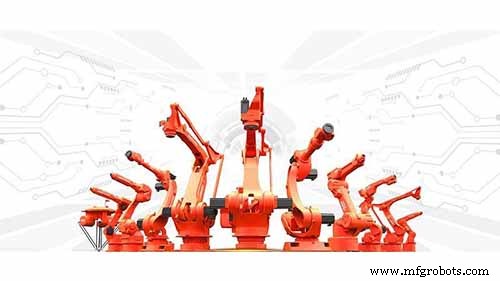
Содержание
Что такое промышленный робот?
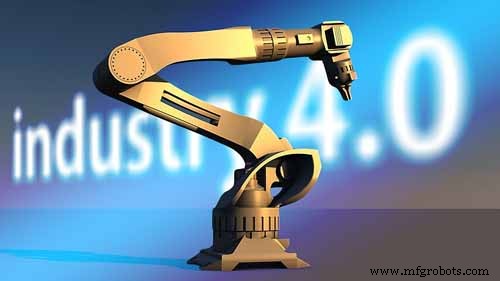
Типы промышленных роботов
Роботы с шарнирно-сочлененной рамой
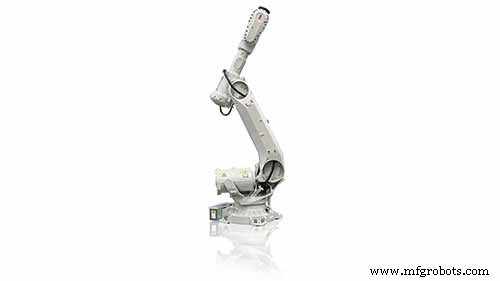
Плюсы
Минусы
Промышленное приложение
Декартовы роботы
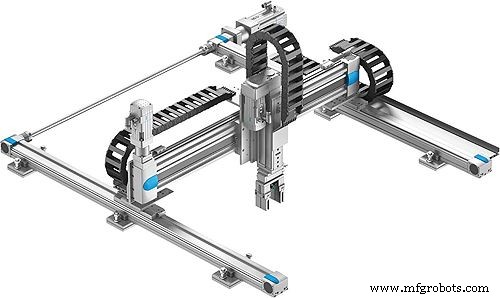
Плюсы
Минусы
Промышленное приложение
Роботы SCARA
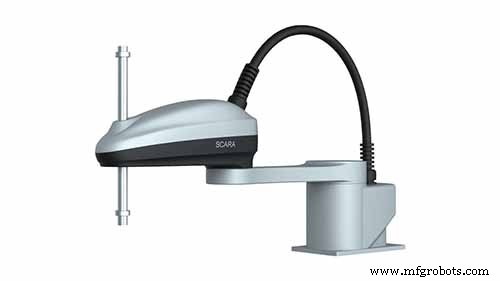
Плюсы
Минусы
Промышленное приложение
Дельта-роботы
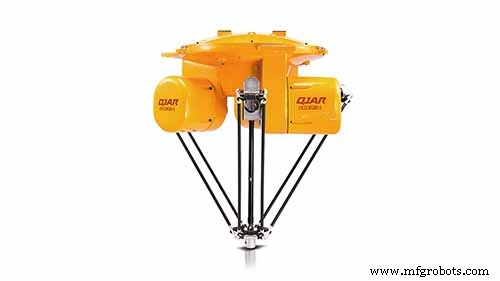
Плюсы
Минусы
Industrial Application
Polar Robots
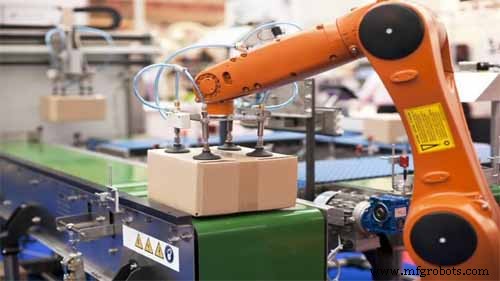
Pros
Cons
Industrial Application
Cylindrical Robots
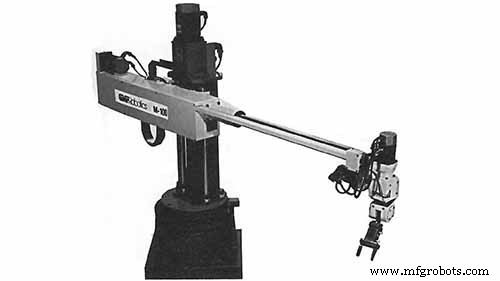
Pros
Cons
Industrial Application
Cobots
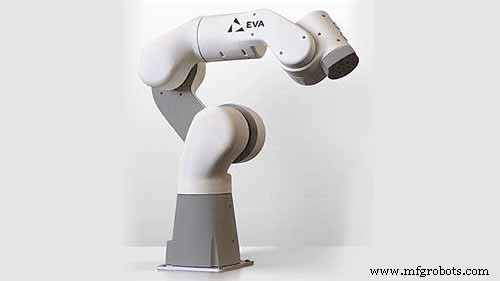
Pros
Cons
Industrial Application
How Do Robotic Arms Work?
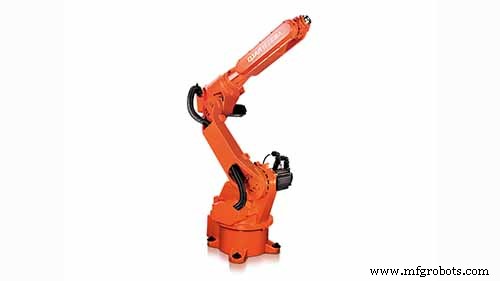
Robotic arms are designed based on the human arm, and they work almost in the same manner. How a robotic arm works depends on the task it has been designed for. In general, however, there is a specific way that all robotic arms function. They all depend on joints for movements and are equipped with other features that make this possible, sensors, for instance. Controllers
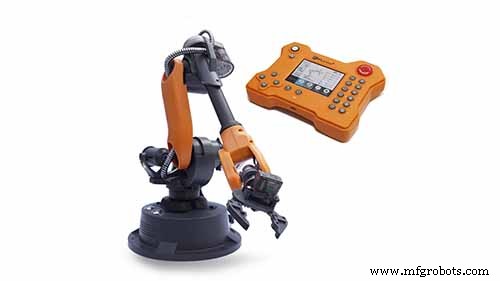
Arms
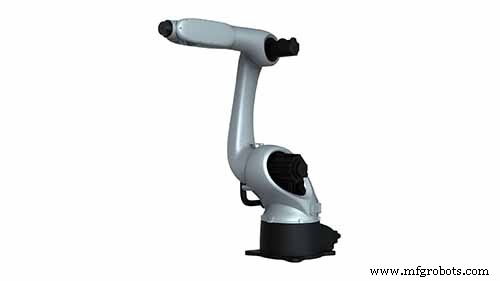
End Effector
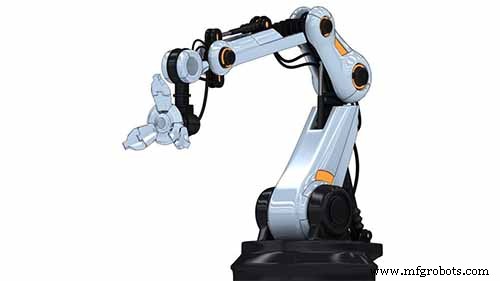
Drives
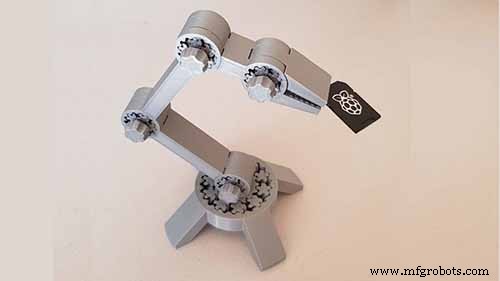
Why Do You Need Robotic Arms?

Improved Worker Safety
Decreased Costs
Increased Productivity
Better Product Quality
Reliability
What Industries Use Industrial Robots?
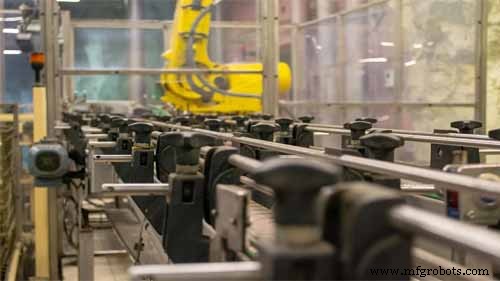
Automotive Industry
Aerospace industry
Electronics Industry
Food Industry
Medical and Pharmaceutical Industry
How Much Does A Robotic Arm Cost?

The Best Programmable Robotic Arms of 2020
DOBOT Magician Educational Programming Robot
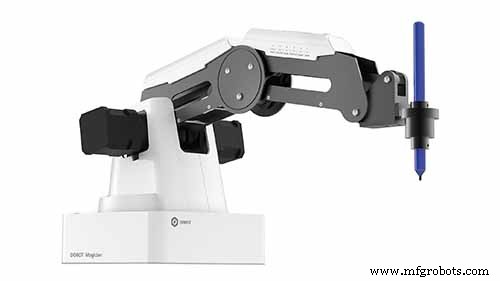
LewanSoul LeArm 6DOF Full Metal Robotic Arm
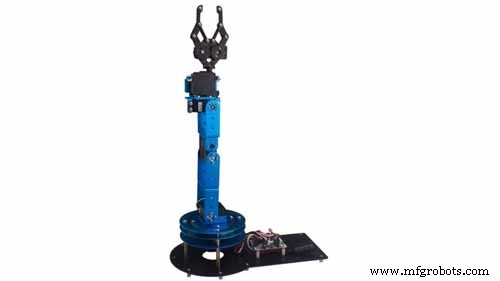
QJRB800-1 Robot Arm
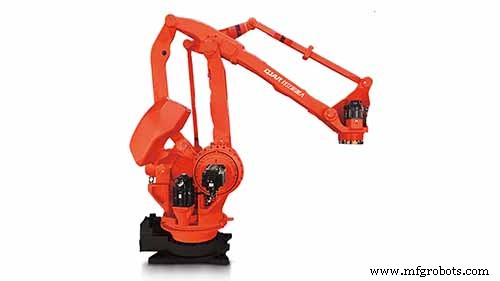
Owi Robotic Arm Edge
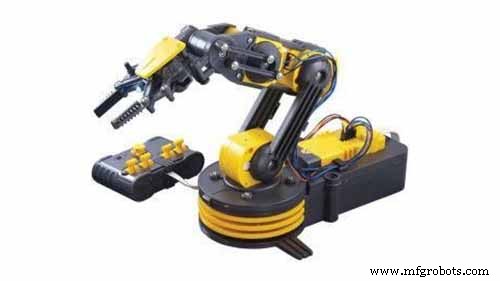
How To Choose Industrial Robotic Arms
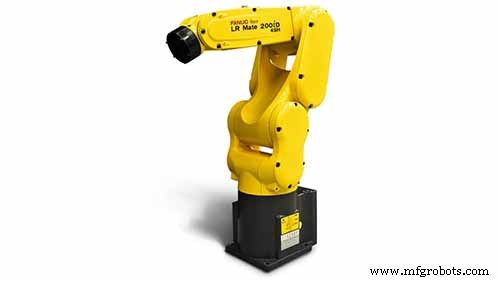
Application
Payload
Degree of Freedom
Speed
Cost
Заключение
Промышленный робот
- Шарнирно-сочлененные роботы:руководство по самому знакомому промышленному роботу
- Промышленные роботы:Руководство №1 по робототехнике для всех отраслей
- Лучшие поставщики промышленных роботов в Великобритании
- Топ-10 производителей промышленных роботов в 2020 году
- 7 лучших промышленных роботов, которых вы должны знать
- Роботы с искусственным интеллектом
- Индустриальная автоматизация
- Что такое AIaaS? Полное руководство по ИИ как услуге
- Полное руководство по различным типам соединений
- Ваш полный путеводитель по лучшим промышленным сельскохозяйственным продуктам



